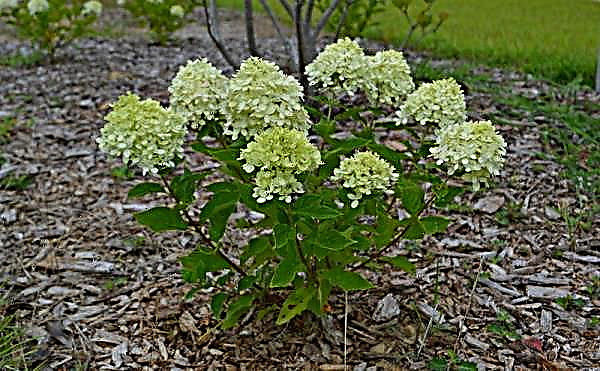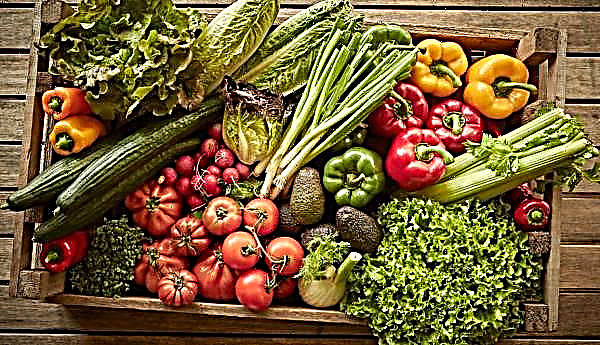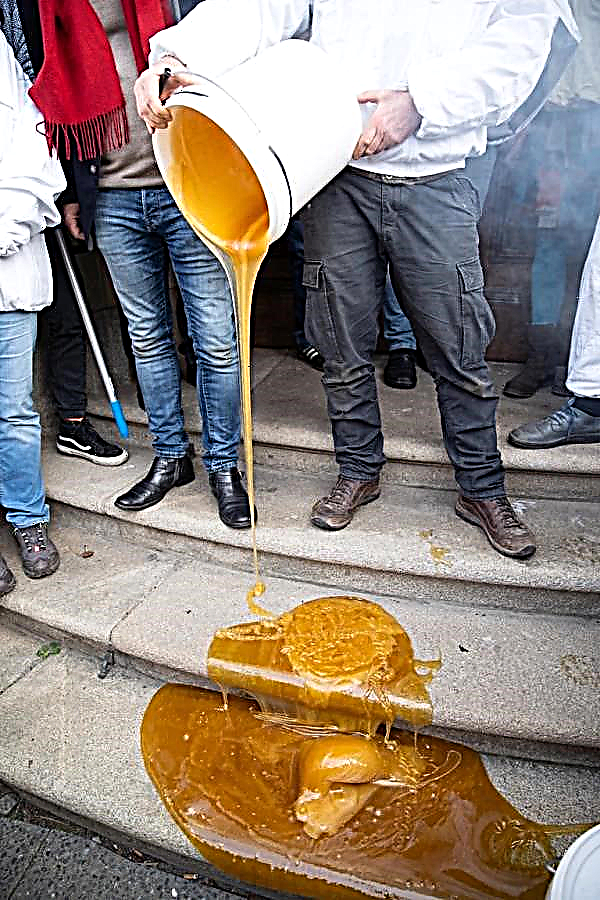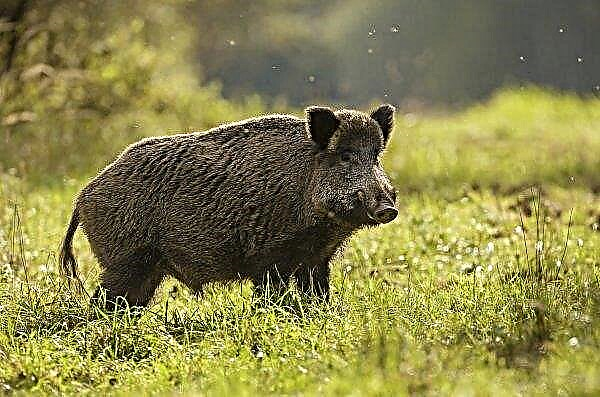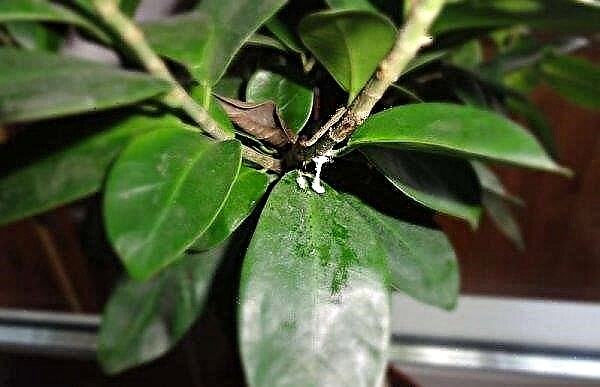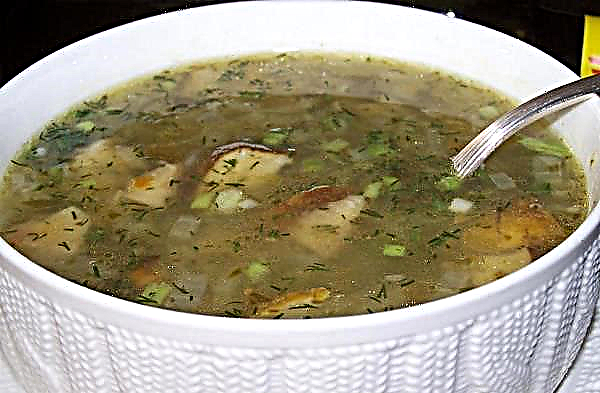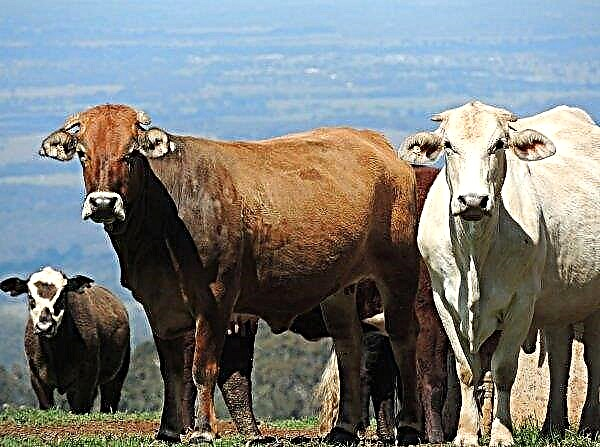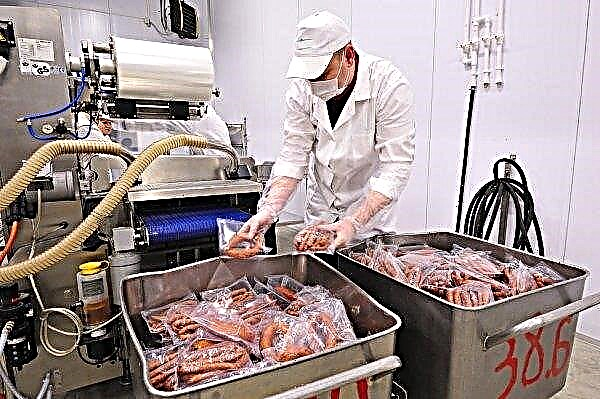With the beginning of the development of selection as a science, scientists all over the world are trying to develop a universal product of plant origin, which has excellent nutritional qualities, unpretentiousness, high productivity and other useful properties. To some extent, these works are not without success embodied in the triticale grain culture.
What is triticale
Triticale is an amphidiploid derived from the cross of two plants - rye and wheat. Culture embodied the best properties of species. Amphidiploids are called hybrids that have in their own chromosome set all the chromosomes of both ancestors in equal quantities. The main difference from simple hybrids is the ability to reproduce while preserving hereditary traits.

Discovery story
Crossing rye and wheat, trying to embody their best qualities in a new plant, began in the century before last. The first samples were received in 1875 by the botanist Wilson. But the plants were unable to give offspring. Later, in 1888, the German W. Rimpau developed another form of culture that already yielded a crop, albeit a low one. All early hybrids had low fertility.
In 1936, American scientists Blacksley and Iverel discovered the polyploidizing effect of colchicine alkaloid when exposed to dividing plant cells. This scientific discovery allowed Soviet scientists V.N. Lebedev get tetraploid triticale, and A.I. Derzhavin is a hexaploid hybrid.
In 1941 V.E. Pisarev created a frost-resistant form, taking as the parent material the most resistant to cold Siberian varieties of rye and wheat. After more than 30 years, Canadian breeders developed the first commercial varieties based on this hybrid - Welsh and Rosner.Did you know? The name Triticale is an acronym for the Latin words Triticum ("wheat") and Secale ("rye").

Today, the most popular from a practical point of view are hexaploid varieties of triticale. The popularity of such varieties is increasing every day, mainly in countries of eastern and southern Europe, as well as in Russia. Poland has long been a leader in the cultivation of this crop.
Plant description
Before “disassembling” the culture in detail, it is necessary to study in more detail its external and physiological characteristics, the knowledge of which directly determines the complex of agrotechnical work, the result of which is a stable, high-quality crop.
Appearance
The plant stem has 5–7 internodes, hollow inside, there is pubescence below the ear. Grain varieties reach a height of 70–115 cm, fodder grows higher, from 120 to 170 cm. The stem at the base is notable for its considerable thickness, which helps even varieties with a long stem not to bend under the influence of a strong wind. cm.
The leaves are elongated, traditional for cereal, forms. In length reach 32–35 cm, in width - 3 cm. Color - from dark green to gray, covered with a waxy coating. Plates form earlier than wheat, and stay green longer.
The fruit is a yellow caryopsis with a brown tint, the length of which reaches 10-12 mm and a width of 3 mm, does not crumble. The surface of the fruit is tuberous, in the middle the grain is divided by a groove, on the top there is a crest. A thousand grains weigh between 40-60 g. Triticale is a self-pollinated plant.
Characteristics
Triticale has remarkable nutritional qualities and surpasses many grain crops in its characteristics:
- winter hardiness. The culture tolerates low temperatures perfectly, sprouts appear already at +1 ... + 2 ° С. Young shoots are not afraid of frosts to -3 ...- 6 ° C. Winter varieties do not die even if the soil freezes to -18 ...- 20 ° C at a depth of 3 cm;
- resistance to drought. The plant does not need water like wheat. Adequate hydration is necessary only during intensive growth. In addition, triticale normally tolerates heat up to + 40 ° C;
- relation to light. Culture loves the abundance of sunlight and reacts to it accordingly. If you add sufficient moisture to the abundance of lighting, triticale meets a high yield. As a result, more sugar and nutrients accumulate in the grain and green mass;
- It is highly resistant to many diseases. Thanks to rye genes, it is immune to potato disease;
- productivity. Using advanced agricultural techniques, it is possible to achieve a yield of grain varieties of 30–35 kg / ha, fodder up to 60 kg / ha. For example, the average wheat yield in Russia is lower (up to 23–25 c / ha).

Species and varieties
To date, many winter and spring varieties of culture have been bred, among which one should pay attention to popular varieties:
- Altai-5. Winter variety, zoned for the western regions of Siberia. The average yield is 32.5 kg / ha, the maximum - up to 70 kg / ha. The stem grows to 105–135 cm, shows good resistance. It has a high immunity to most diseases.
- Amphidiploid 256. Belongs to winter varieties, grows well in the regions of the North Caucasus. The average yield is 43.5 c / ha. It tolerates dry summers, resistant to shedding and lodging. It is used in cooking.
- Yarilo. Recommended for growing in the North Caucasus, a spring variety of grain type. Productivity reaches 25 kg / ha. It has a fairly high immunity to most diseases.
Of the plants of fodder orientation typical of Russia, the following should be mentioned:
- Argo. Winter variety from which green fodder and hay are obtained. It features a wide geography of areas suitable for cultivation: Center, Central Black Earth, Volga region and the North Caucasus. Resistant to diseases and parasites, the yield of green mass can reach 180 c / ha.
- Tornado. Winter cereal reaches 130-160 cm in height, grain yield can be 60 kg / ha. It grows well in the middle zone and the Volga region. Of the diseases, only snow mold is a danger, it is resistant to most others.

Growing rules
It grows well on podzolic or sod soils with a pH of 5.5–6.5. He does not like waterlogged soil, so heavy, marshy or poorly permeable areas for cultivation are not suitable.
- Soil for planting is prepared in the same way as it is done for rye or wheat. They bring in organic matter (300 kg / ha), and 80–90 kg / ha of nitrogenous fertilizers. Before sowing, it is necessary to cultivate the site.
- Usually, sowing is carried out in standard rows, the distance between which should be within 8-15 cm.
- In the northern regions, winter crops are sown in the second half of August, in the south - a month later. Spring varieties are planted 3–8 days after the earth has completely thawed. With intensive cultivation technology, the seeding depth is 2-3 cm.
- The culture should not be sown in places where wheat or other cereals grew before it.
- 15–20 days before planting, the seeds are treated with insecticides and fungicides, preventing the moisture level in the grains from exceeding 14%. For planting, seeds are used that have a mass of at least 40 g / 1000 pcs.
- Pesticides are used against diseases and pests.
- Harvested at a grain moisture content of 24–26% (for use in the food industry and agriculture), for sowing material - not higher than 20%. Due to the fact that the grain of the crop has the ability to germinate on the vine, harvesting is carried out immediately, upon reaching maturity.

There is a misconception that over time, culture degenerates, splitting into parental species. The reason for this is rye and wheat in the traditional form, which are often found in the fields with triticale. In fact, there can be no such degeneration in principle, and separately growing parent plants appear as a result of mixing the seed during harvesting. To avoid this phenomenon, just clean the combine well.
Important! The triticale grain is larger than that of the parent species. Therefore, for its threshing, the equipment is reconfigured to avoid crushing.
Chemical composition and nutritional value
Nutritional value of grain (per 100 g):
- calorie content: 293 kcal;
- proteins: 12.8-18.0 g;
- lysine: 3.8 g;
- fats: 2.08-4.0 g;
- carbohydrates (starch): 54.5–70.0 g;
- fiber: 2.5–3.0 g.

This hybrid contains proteins of various types:
- 37.0–42.0% - water and salt soluble, typical for rye;
- 21.5–25.5% are alcohol-soluble inherent in wheat.
Due to this balanced protein content, the crop is a valuable feed material. To understand how nutritious triticale is, given its characteristics, in comparison with other cereals:
- there is more protein in the grain of this culture than in the parent species;
- the content of essential amino acids is higher than in sorghum and corn;
- more lysine and tryptophan than in all other cereals.
In addition, the culture is rich in such useful substances (in% of the daily norm):
| Vitamins: | Minerals: |
| B1 - 28%; | potassium - 15%; |
| B2 - 7.5%; | calcium - 5.5%; |
| B5 - 26.8% | magnesium - 30%; |
| B6 - 6.9%; | sodium - 0.4%; |
| B9 - 17.9%; | phosphorus - 50%; |
| E - 5.8%; | iron - 28%; |
| RR - 7.4%. | Manganese - 160%; |
| copper - 46%. |

The benefits and harms of grain
Cereals are rich in nutrients, nutrients, which makes it possible for people who follow various diets to use it. However, it should be said that the product has a large amount of gluten in its composition, which makes it impossible for people suffering from celiac disease.
Where applicable
Like most crops, triticale is used in the food industry and agriculture.
In agriculture
The main application of culture, at present, is agriculture. In Europe, the average yield is about 50–70 kg / ha. In Russia, this indicator is slightly lower. Using modern agricultural techniques, you can achieve yields of 30–35 kg / ha. At the same time, such varieties produce up to 500-600 centners of green mass from the same area. With good irrigation, you can achieve better results.
Triticale has a greater feed value than oats and barley. The protein content is higher than other grains. In the green mass, the concentration of lysine, proteins, carotenoids and easily digestible carbohydrates is higher than in the parent species.
Feed value of the crop (in feed units):
- grain - 1.24;
- green mass - 0.3;
- straw - 0.2.
For example, the feed value of oats is 1 k. Unit, barley - 1.15 k. Unit, soy - 1.45 k. Triticale straw is less valuable in feed utility than barley and oats.
Did you know? 100 g of triticale grain contains more than 1.5 daily norm of manganese, without which the body cannot absorb vitamins of groups B, C, E. In addition, this microelement supports immunity, is useful for digestion, and promotes the regeneration of tissues, including bone.
It is advisable to apply for such purposes:
- compost harvesting;
- top dressing of the soil through shallow embedding - to increase fertility;
- use as a raw material for the production of alcohol, acetone, pulp and paper products.

But still, the main purpose of the culture in this segment is livestock feeding. Triticale has proven its worth in this capacity. Studies have shown positive dynamics of growth, weight gain and cattle milk yield:
- milk yield - an increase of 12-14%;
- fat content in milk - an increase of 0.2-0.3%;
- an increase in the mass of young cattle by 15-17%.
Grain grain is an essential component for the production of animal feed. Feed grades have found their application in the preparation of silage, feed pellets, briquettes, flour and green feed. In the production of the latter, the triticale fills the niche between mowing winter rye and harvesting perennials. A feature of the culture is the difficulty of separating the grain shell from the endosperm. Simply put, a seed is difficult to peel, to separate from the shells.
Did you know? In terms of the content of folic acid derivatives, triticale is superior to wheat by 2, and rye - by 3 times. These substances, together with vitamin B12, remove from the blood an excess of homocysteine, an amino acid whose surplus leads to the development of heart and vascular diseases.
In cooking
Triticale is also used in cooking, mainly as an additive to wheat flour. The main reason this product is almost never used in baking on its own is the low quality of gluten.
But the flour from this cereal is added to traditional wheat - for baking bread. Usually its share in the mixture is 20-30% of the total mass. Such an additive contributes to the production of lush, long non-breading bread. Crop grain is used to produce alcohol, used in brewing.
Important! In order to grow 1 ton of triticale grain, you need, on average, 45 kg of nitrogen, 10 kg of phosphorus oxide and 38 kg of potassium sulfate. The plant assimilates most of the nutrients during tillering and heading, as well as during the formation of grain.
What is the difference between triticale and ordinary wheat
Ceteris paribus, triticale produces a yield 1.5-2 times higher than wheat. Its grain is larger than wheat. In addition, the nutritional value of the hybrid is higher - its protein contains more essential amino acids (lysine, threonine, leucine, arginine, tryptophan, phenylalanine, etc.).
Triticale is more resistant to frost, rises faster, and can be sown later than wheat. However, the grain of the hybrid is harder to process, and the quality of its gluten is worse than wheat, which prevents the full use of culture in the food industry, but makes it an excellent raw material for agricultural use.
Important! The quality of bread baked from hybrid flour is inferior to wheat, but triticale starch contains less amylose, which makes it easier for the body to digest and assimilate it.
Triticale is a hybrid of rye and wheat, combining the unpretentiousness of the first and the nutritional qualities of the second. The culture is characterized by high productivity, the most moderate soil composition requirements, and high winter hardiness. Currently, cereals are used, to a greater extent, in agriculture, but its potential is much higher. And perhaps not far off are the days when triticale flour products will lie on the shelves of bakeries.

